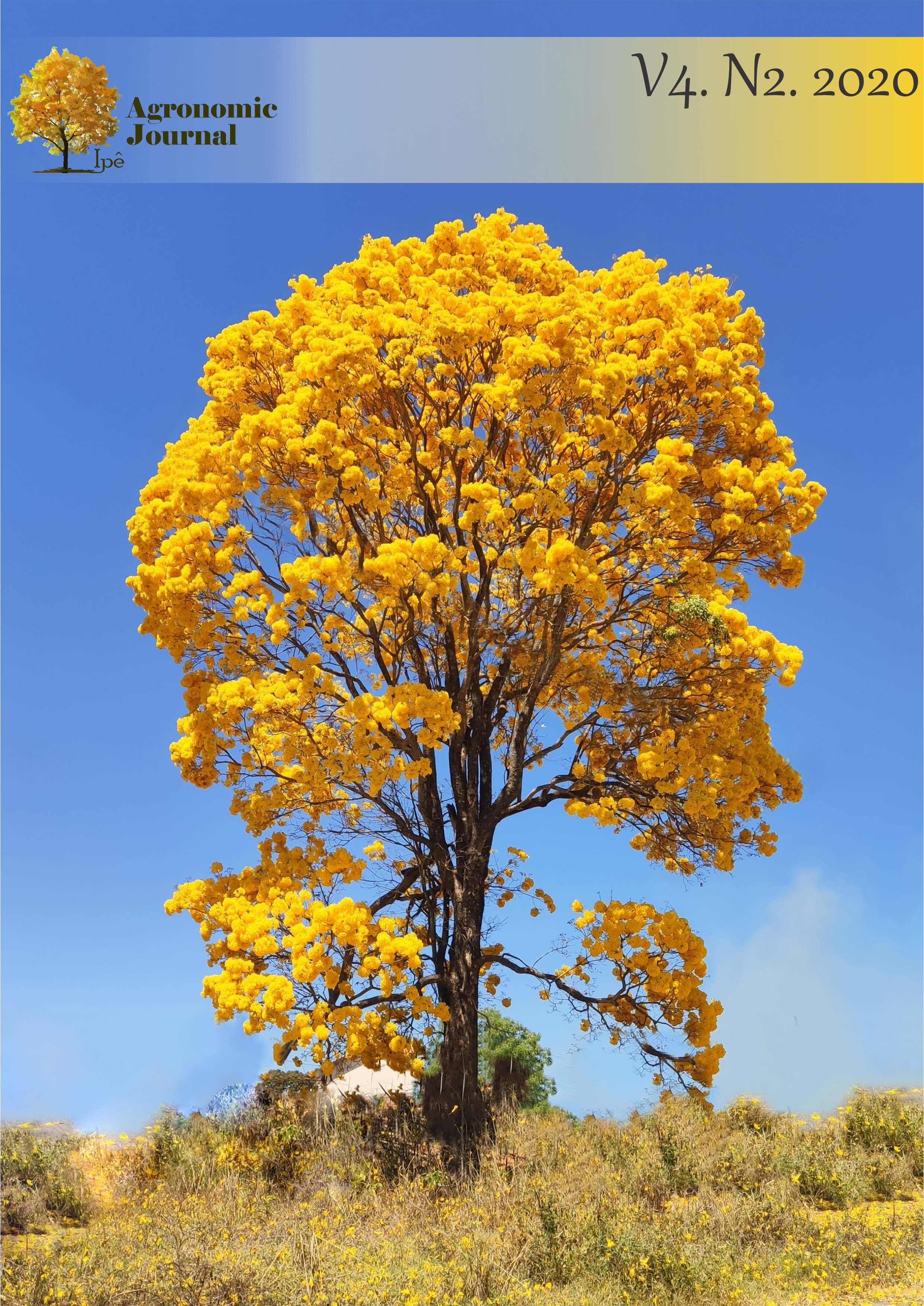PRODUCTION OF FORAGE OF THE SPECIES PANICUM MAXIMUM SUBMITTED TO NITROGEN DOSES
DOI:
https://doi.org/10.37951/2595-6906.2020V4I2.6242Keywords:
Urea, morfogêneses, SynthesesAbstract
NITROGEN IS THE MAIN NUTRIENT TO ENSURE FORAGE PRODUCTIVITY, AS IT IS INVOLVED IN THE FORMATION OF PROTEINS, CHLOROPLASTS AND COMPOUNDS THAT ARE ACTIVE IN THE SYNTHESIS OF ORGANIC COMPOUNDS, WHICH CONSTITUTE PLANT STRUCTURES. THE OBJECTIVE OF THIS STUDY WAS TO EVALUATE STRUCTURAL AND PRODUCTIVE CHARACTERISTICS OF THE CULTIVARS BRS QU�NIA AND BRS TAMANI SUBMITTED TO TWO DOSES OF NITROGEN. THE EXPERIMENT WAS CARRIED OUT AT THE SCHOOL FARM OF THE AGRONOMY COURSE AT FACULDADE EVANGÉLICA DE GOIAN�SIA. THE EXPERIMENTAL DESIGN USED WAS IN RANDOMIZED BLOCKS, IN A 2 X 2 FACTORIAL SCHEME (TWO CULTIVARS AND TWO DOSES) WITH FOUR REPLICATES EACH AND FOUR CUTS IN THE SUBPLOTS. THE TWO CULTIVARS USED WERE TWO FORAGES OF THE GENUS PANICUM MAXIMUM (TAMANI AND KENYA) AND THE NITROGEN DOSAGES WERE 200 AND 300 KG OF N HA -1. THERE WAS SIGNIFICANT INTERACTION BETWEEN CULTIVARS AND TREATMENTS (TABLE 3). IN THE EVALUATION OF PANICUM MAXIMUM CULTIVARS WITHIN THE DOSES OF N (200 KG N / HA-1 AND 300 KG N / HA-1), CV. TAMANI PRESENTED AVERAGES SUPERIOR TO CV. KENYA IN ALL ASPECTS (NF, NP AND FPP). WHEN THE 200 KG N / HA-1 DOSE WAS USED, THE CULTIVAR KENYA SHOWED HIGHER AVERAGES THAN CV. TAMANI IN RELATION TO THE VARIABLES FRESH WEIGHT AND TOTAL FRESH WEIGHT PRODUCTION T HA-1. REGARDING THE ANALYSIS OF DRY MASS, TOTAL DRY MASS T HA-1 AND MS%, THERE WAS NO STATISTICAL DIFFERENCE. THE EVALUATED CULTIVARS RESPONDED POSITIVELY TO THE INCREASE IN THE NITROGEN DOSE. THE DOSE OF 300 KG N HA-1 PROMOTED GREATER PRODUCTION IN THE CULTIVARS AND VARIABLES ANALYZED. THE CULTIVAR KENYA WAS MORE RESPONSIVE IN TERMS OF MF AND MS IN RELATION TO TAMANI.
Downloads
Published
Issue
Section
License
Esta revista oferece acesso livre imediato ao seu conteúdo, seguindo o princípio de que disponibilizar gratuitamente o conhecimento científico ao público proporciona maior democratização mundial do conhecimento.
A partir da publicação realizada na revista os autores possuem copyright e direitos de publicação de seus artigos sem restrições.
A Revista Científic@ - Multidisciplinary Journal segue os preceitos legais da licença Creative Commons - Atribuição-NãoComercial 4.0 Internacional. 





